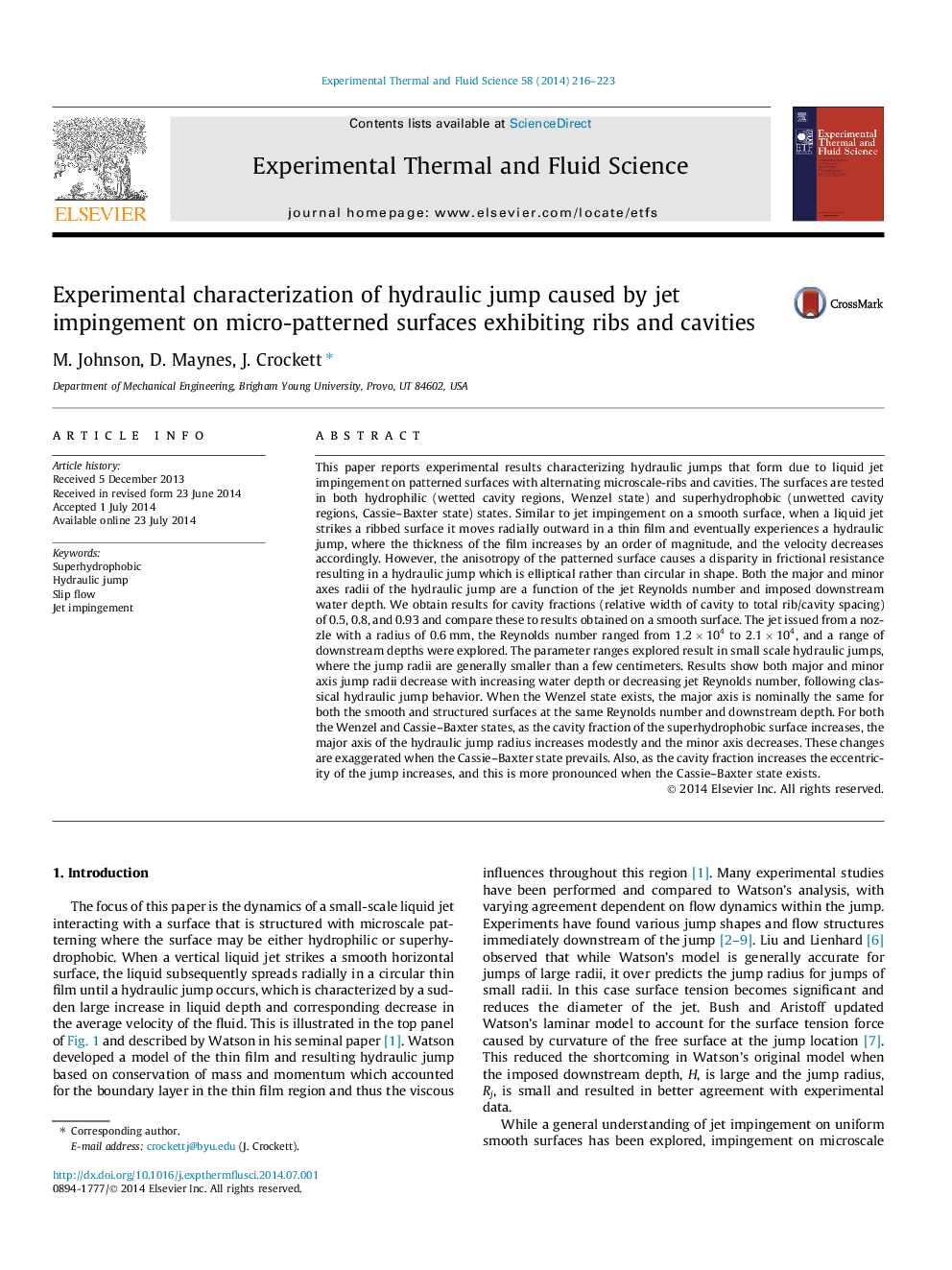| Article ID | Journal | Published Year | Pages | File Type |
|---|---|---|---|---|
| 651442 | Experimental Thermal and Fluid Science | 2014 | 8 Pages |
•A small-scale liquid jet impinges on a micro-scale patterned surface.•The hydraulic jump radius increases as the pattern spacing increases.•The surface structuring of ribs and cavities results in an anisotropic hydraulic jump.•When cavity regions are filled with air, apparent slip is greater parallel to ribs.•Thin film area increases with increasing Re and decreasing downstream depth.
This paper reports experimental results characterizing hydraulic jumps that form due to liquid jet impingement on patterned surfaces with alternating microscale-ribs and cavities. The surfaces are tested in both hydrophilic (wetted cavity regions, Wenzel state) and superhydrophobic (unwetted cavity regions, Cassie–Baxter state) states. Similar to jet impingement on a smooth surface, when a liquid jet strikes a ribbed surface it moves radially outward in a thin film and eventually experiences a hydraulic jump, where the thickness of the film increases by an order of magnitude, and the velocity decreases accordingly. However, the anisotropy of the patterned surface causes a disparity in frictional resistance resulting in a hydraulic jump which is elliptical rather than circular in shape. Both the major and minor axes radii of the hydraulic jump are a function of the jet Reynolds number and imposed downstream water depth. We obtain results for cavity fractions (relative width of cavity to total rib/cavity spacing) of 0.5, 0.8, and 0.93 and compare these to results obtained on a smooth surface. The jet issued from a nozzle with a radius of 0.6 mm, the Reynolds number ranged from 1.2×1041.2×104 to 2.1×1042.1×104, and a range of downstream depths were explored. The parameter ranges explored result in small scale hydraulic jumps, where the jump radii are generally smaller than a few centimeters. Results show both major and minor axis jump radii decrease with increasing water depth or decreasing jet Reynolds number, following classical hydraulic jump behavior. When the Wenzel state exists, the major axis is nominally the same for both the smooth and structured surfaces at the same Reynolds number and downstream depth. For both the Wenzel and Cassie–Baxter states, as the cavity fraction of the superhydrophobic surface increases, the major axis of the hydraulic jump radius increases modestly and the minor axis decreases. These changes are exaggerated when the Cassie–Baxter state prevails. Also, as the cavity fraction increases the eccentricity of the jump increases, and this is more pronounced when the Cassie–Baxter state exists.
